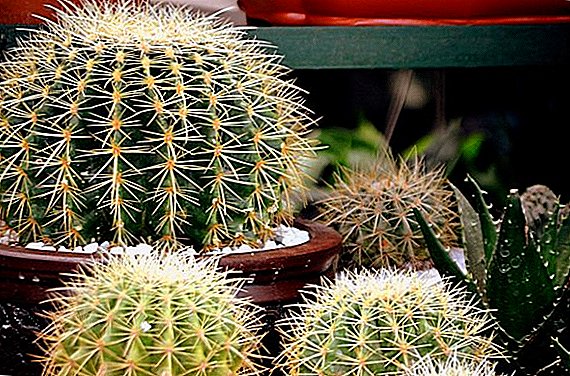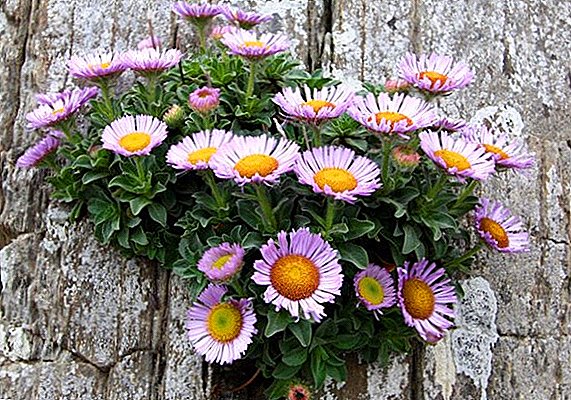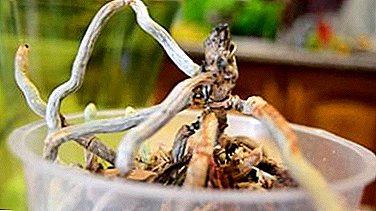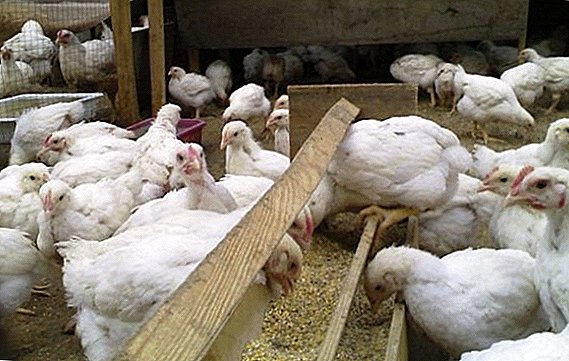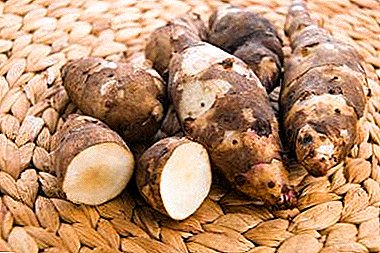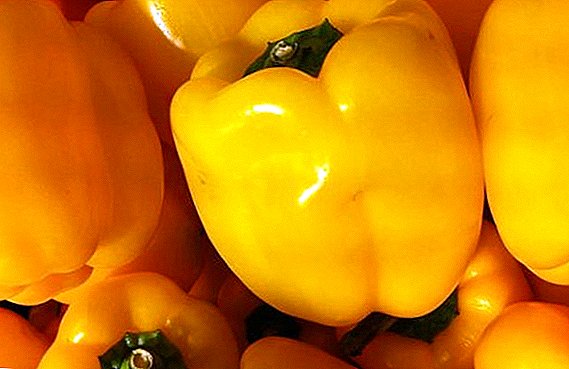
On the planet is growing a large number of species of euphorbia.
Many of them are grown in the house.
But the most popular and love flower growers enjoyed spurge lovely, better known as Spurgeon Mile, so called in honor of Baron Milewho brought it back to Europe from the island in the early 19th century Reunionwhere he was governor.
Like many other overseas guests, this spurge grew up in a greenhouse for a long time, reaching large sizes, there he was often given various bizarre forms. Then he migrated to the window sills, where, of course, he looked more modest, but still looked quite impressive.
Description
In the wild, euphorbia Mil grows mostly in the mountains of East Africa and on the hills of Madagascarthere he grows up to gigantic sizes.
In the official directories euphorbia Mil is also called euphorbia, spurge fine. In common parlance it is called crown of Christ, the blood of Christ. Succulent grows So slowfor the year he grows by 1-2 cm
Stem
 Euphorbia Mile belongs to colonic plants, because its trunk reaches a great thickness and can be up to 20 cm in diameter.
Euphorbia Mile belongs to colonic plants, because its trunk reaches a great thickness and can be up to 20 cm in diameter.
It is pale gray, brownish in color, resembling a bloom, smooth, rather densely studded with stiff long spikes, slightly ribbed.
Euphorbia can grow up to two meters.
Leaves
The leaves are bright green, triangular in shape. Spurge barbed, because at the end of each there is a small thorn. The leaves fall off as the milkweed grows, so only the tops of the stems are abundantly covered with them.
Both in the trunk and in the leaves of milkweed there is a milky juice of a thick white consistency. is he is poisonous and can cause skin irritations and even burns.
Bloom
Spurge blooms constantly throughout the year inconspicuous yellow tiny flowers, which are collected in inflorescences in the form of a glass. They are surrounded by bright red or no less bright yellow, orange leafy plates, which make the flower attractive and large enough.
There are many flowers on one plant, they are scattered in all branches, and from this spurge looks very impressive.
You can provoke lush flowering plants, lowering the temperature up to 15 degrees and making a bright additional lighting.
Why does not bloom spurge mile? Euphorbia can not bloom in the event that he has too many side shoots and budswhich take all the power of the plant.
Such species of Euphorbia are very popular in home cultivation: Multifloric, Fringed, Cypress, Tirukalli, Ribbed, Pallas, Belochylkovy, Triangular.
A photo
Next you can see the photo Milkweed Mil (brilliant):



Home care
Like all other types of euphorbia, euphorbia is brilliant unpretentious, lives long. With proper care at home, Euphorbia Mile will constantly delight the owners with lush blooms.
Transplant after purchase
Euphorbia, which just brought from the store, needs acclimatization: about 10 days it should not be transplanted. It is better if it is at this time to be in a well-lit, but not sunny place. Then it must be transplanted from the transporting pot into the prepared soil.
In the pot, where the euphorbia will grow, need to lay out drainage. The plant is removed from the pot, carefully inspect the roots, gently shake them from the technological soil.
If there is a sponge between the roots, which is placed there to preserve moisture and nutrients during transport and storage, it is carefully removed.
 After that, spurge is installed in a prepared pots with fresh soil and carefully sprinkled with earth on all sides, trying to keep the plant in the center of the pot and well kept in the ground.
After that, spurge is installed in a prepared pots with fresh soil and carefully sprinkled with earth on all sides, trying to keep the plant in the center of the pot and well kept in the ground.
In the future, spurge will not have to often replantas he growing slowly and also slowly increases the root mass.
Can once in two years to load the plant into fresh soil, if it is found that the root system has not filled the entire old pot, then use the same size pots for handling.
Watering
There are several features in watering euphorbia:
- in winter the plant is practically does not need wateringit is enough to moisten the soil for the entire period of two or three times;
- for watering only take soft warm water;
- in the period of growth, from spring to autumn, earthy must be constantly moistened;
- if the plant withered and dropped the leaves, it does not mean that it died, with intensive watering, it is quickly restored.
Air humidity
But it must often be sprayed and washed, preferably under a warm shower. It does not tolerate leaf contamination.
Temperature conditions
 Euphorbia plant thermophilic, with a strong decrease in temperature, it dies.
Euphorbia plant thermophilic, with a strong decrease in temperature, it dies.
Better if the temperature will not be go down below 18 degrees.
Already 10 degrees are for eufobias critical.
Light mode
Euphorbia light-requiring, it should be placed on the southern windowsill.
In the warm season it is necessary to spurge take to the airand it is even better to drop them in the garden right in the pot, while the place should be bright, but protected from direct sunlight.
Priming
For this plant is ideal soil, composed from coarse sand, leaf humus and pieces of charcoal in approximately equal shares.
Top dressing
Spurge does not require intensive feeding even in a period of growth. It is enough to do this twice a season, using mineral fertilizers, but it is useful to constantly pour bone meal into the ground.
Breeding
Propagation of houseplants euphorbia mile is best done in the spring, with the help of cuttings and seeds.
Seeds
Euphorbia is easy to propagate by seed, they sprout well, but the varietal qualities may not be preserved. And besides, the seeds are very difficult to collect at home.
Cuttings
 it the most efficient and easy way reproduction of Milkweed Mil, which preserves all varietal characteristics embedded in the plant.
it the most efficient and easy way reproduction of Milkweed Mil, which preserves all varietal characteristics embedded in the plant.
Cut the apical cuttings are placed in a specially prepared for this purpose soil consisting of a mixture of peat and sand, taken in equal proportions.
Before landing cuttings immersed in water for a whileto juice flowed out.
For the best education of roots, capacity with saplings put on a battery or stoveso that the soil stays constantly warm, but it must be a fairly bright place.
Plants can be covered with a can or arranged over them film greenhouse. So they take root better.
Shaping and trimming the tree
To make the plant look attractive, you need to deal with the formation (trimming) of euphorbia mile:
- At first sets the direction of the branches horizontally, for this purpose, the tops of the shoots are pinched, and the lateral buds are completely removed.
- Upon reaching the desired size of the bush cut off the whole crown.
- For intensive shoots and buds, the lighting is reduced.
- Can be engaged in the formation of milkweed in any season.
Diseases and pests
The main problems in growing euphorbia are mainly associated with defects in care:

- the fall of leaves in autumn is a completely normal phenomenon, but in summer it occurs mostly due to lack of heat;
- trunk began to rot, and the leaves curl, then earthen room was constantly overmoistened; at an early stage, the flower can be saved by limiting watering, but if the process of decay has gone far enough, the plant will inevitably die, so you need to cut horse cuttings to grow a new spurge;
- if only single flowers appear on the plant, and the leaves lose their brightness, then this indicates a lack of lightit means you need to increase the light.
Euphorbia is often attacked by pests:
- spider mite;
- aphid;
- shield;
- whitefly.
To combat and prevent them:
- Constantly examine the plant carefully.
- Do not allow dust to cover the leaves.
- Occasionally process euphorbia with soap sudsit is better to use economic or tar soap.

- If pests are found, they must be removeeven if you have to trim the affected leaves and branches.
- The affected plant is treated with soap suds, then it is under a warm shower for a long time.
- If this treatment does not help, then apply chemicals.
- With the defeat of spider mite and whitefly, window frames and window sills are treated.
At home in the tropics, this succulent forms impassable thickets, the locals use it to create decorative hedges.
Some theologians believe that euphorbia was introduced in ancient times to the territory of modern Israel, where it grew in the form of huge bushes. It was from its branches that the martyr's crown of Christ was woven.


